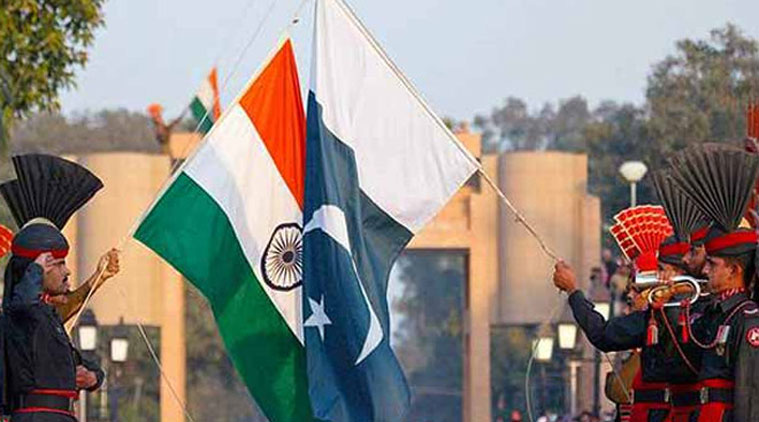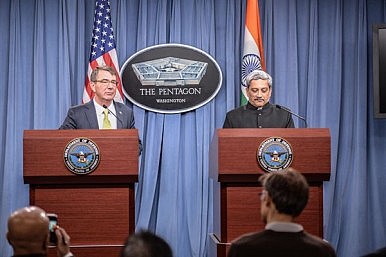By Syed Qamar Afzal Rizvi .
US-India relationship & Pakistan
The Indian premier Narendra Modi and the US president Barack Obama seem to have lost their love during a recently held rendezvous at the White House. The modes– between the two sides-swings towards new rejuvenation. But this show of improving bilateral talks happened at a times when the climate of relationship between Washington and Islamabad and also between India and Pakistan touches the low-ebbs. Amid this situation of US- India promising relationship, the question arises is: How would a strong relationship between the United States and India affect America’s relations with Pakistan?
Senator Ben Cardin’s question, asked at a recent hearing of the US Senate Committee on Foreign Relations, led to a long debate on this issue among US lawmakers, a senior State Department official and think-tank experts.
The hearing, called to review US-India relations, moved on to Pakistan when Senator David Perdue, a Republican member of the committee, asked Assistant Secretary of State for South and Central Asia Nisha Desai Biswal for an update on the Pakistan-India security issues and to share the State Department’s perspective on the relationship between the two countries.
Senator Cardin, the committee’s ranking Democrat, however, further expanded this debate when he asked the participants to help the panel “understand how the United States can strengthen its ties with India as it relates to our relationship with Pakistan”.
Senator Cardin, while widening the debate, noted that the US had made a decision several decades ago to have a more strategic relationship with Pakistan.
“We have many issues with what Pakistan does, but we have a strategic partnership that’s critically important to our counter-terrorism activities,” he said. “As a result, there are economic issues between our two countries, including military issues that advance US interest.”
US-Pak strategic dialogue
The United States and Pakistan had the sixth round of their strategic dialogue in Washington recently. The U.S. Pakistan Strategic Dialogue Joint Statement issued after the talks details extensive ongoing cooperation in the fields of energy, trade, investment, education, and science and technology, and reiterates the commitment to continue it. It also speaks of close cooperation in counterterrorism, especially action against Al-Qaeda and its affiliates and the Islamic State of Iraq and the Levant (ISIL)/Da’esh. But on regional security issues, strategic stability, and non-proliferation, there were largely hints of policy differences glossed over by generalities, with Afghanistan being the exception where the need as well as desire for cooperation was obvious.
Overall, the statement, though strong on rhetoric was mixed on substance. It was essentially an aspirational statement. And given the complexities of the U.S.-Pakistan relations and their recent history, one would say much work needs to be done by both sides to realize its objectives.
The United States and Pakistan had the sixth round of their strategic dialogue in Washington recently. The U.S. Pakistan Strategic Dialogue Joint Statement issued after the talks details extensive ongoing cooperation in the fields of energy, trade, investment, education, and science and technology, and reiterates the commitment to continue it. It also speaks of close cooperation in counterterrorism, especially action against Al-Qaeda and its affiliates and the Islamic State of Iraq and the Levant (ISIL)/Da’esh. But on regional security issues, strategic stability, and non-proliferation, there were largely hints of policy differences glossed over by generalities, with Afghanistan being the exception where the need as well as desire for cooperation was obvious.
Overall, the statement, though strong on rhetoric was mixed on substance. It was essentially an aspirational statement. And given the complexities of the U.S.-Pakistan relations and their recent history, one would say much work needs to be done by both sides to realize its objectives.
Afghanistan’s quandary
Over time, both the U.S. and Pakistan governments accepted the losses grudgingly and gains ungratefully and still found each other relevant in times of need. But times have changed. Since the September 11 attacks, the relationship has gotten entangled with the ongoing war in Afghanistan. It is never easy to handle a war-related relationship, especially when that war has not been going well. This is even more so when there are multiple issues and stakeholders with competing interests and priorities. Also impacting the relationship is Washington’s growing ties with India, along with a whole set of new security issues which have agitated public concerns, fueled by a 24-hour news cycle and an activist think tank community.
CPEC & US-India anxiety
And yet obsessed with the ongoing CPEC’s development, the Indian policy makers with a tacit US approval, seem to have been orchestrating a game of ‘negative trajectories’ via RAW, Afghanistan’s National Directorate of Security (NDS), and Afghanistan’s Intelligence agency Riyast-i-Amoor-o-Amanat-i-Milliyah (RAAM) collaborated negative role to destablise Pakistan. The propellers of new advocacy regarding US relationship towards Pakistan emphasise that Washington must end its support for the country’s turgid ‘military establishment’ which sustains a perverse strategic culture that has ill served Pakistani and U.S. interests for decades.
Counter-terrorism
Pakistan feels bitter about Washington’s embrace of India and the blowback from US counterterrorism policies. Washington feels embittered by Pakistan’s decisions and seeming incapability of changing course.
In retrospect, the last stand of wishful thinking in the US was the 2010 Kerry-Lugar-Berman (KLB) legislation. Washington’s strategy then was to put more money on the table to incentivise a reconsideration of Pakistan’s policies towards internal threats, Afghanistan, ties with India, and its nuclear posture.
From Washington’s perspective, the timing of KLB seemed right. A new civilian government was in place and in need of reinforcement. A thaw with India – a necessary condition to spur Pakistan’s economic growth – seemed possible. Perhaps Pakistan could be persuaded to not veto negotiations on a Fissile Material Cut-off Treaty, since it was harming Pakistan’s standing without constraining India. And maybe both countries could collaborate on finding a workable political settlement in Afghanistan.
KLB did not fare very well. Well-meaning but tone-deaf members of Congress included a provision supporting civilian control of the military, prompting a backlash and antagonising those capable of changing Pakistan’s national security policies.
US-India trajectory vis-a vis Pakistan
India should also be more confident of its own ability to shape the future trajectory of Indo-U.S. ties. After all, Lockheed Martin, the builder of the F-16, recently offered to move its production line to India from the United States to support the Modi government’s “Make in India” program. Indian elites too need to de-hyphenate New Delhi from Islamabad in their own minds. Any overture that Washington makes toward Pakistan is immediately pounced upon as a sign of American duplicity. The reality is that Washington’s ties with New Delhi are truly strategic while its relationship with Pakistan is at best transactional, whatever gloss the two sides might want to put on it. India and the United States are today talking of jointly working on aircraft carriers, discussing joint patrols in the South China Sea, and are nearing completion on an agreement to share military logistics.
As New Delhi and Washington chart an ambitious trajectory in their bilateral ties, they need to find a more effective way of dealing with Pakistan. The Pakistan factor cannot be allowed to derail the positive momentum in this very important bilateral relationship, one that will be key in shaping the larger Indo-Pacific balance of the power in the coming years
.
US’s unwarranted Indian support for NSG membership
The U.S. has argued that despite its status outside the NPT, India is sufficiently like-minded regarding nonproliferation to merit membership. Yet the facts speak about a different version and that is that India is escalating nuclear arms race in South Asia by means of nuclear build-ups. For making its deserving case for the NSG, India needs to sign the NPT, CTBT and FMCT treaties .It is here that will work hard to meet such conditions. Like the waiver, India and the United States will have to invest significant diplomatic energy to get the required consensus for NSG membership. To build support in the NSG, which operates by consensus, India will need to take additional steps to demonstrate its commitment to nonproliferation.
Given these ‘perceived deficiencies’ in Indian behavior, certain Western European states (and many nonproliferation experts) argue that India is not a fit case to be eligible for the NSG membership.
US Task of keeping the balance
Fifty years after gaining independence, India and Pakistan remain at odds. Given both countries’ de facto nuclear capabilities, their continued rivalry flirts with disaster. U.S. interests in South Asia, although not vital, are important and increasing. These interests include preventing major war and further nuclear proliferation; expanding economic growth, trade, and investment; promoting robust democratic institutions; and cooperating on issues ranging from enhancing stability across Asia to combating terrorism and drug trafficking.
On the other hand, as part of its post- cold war politics, in 2010 the US had signed agreements of strategic partnership and nuclear deal with India as a counterweight to the rising China, although India’s excess to western civil nuclear technology and military hardware and technology as a consequence of these agreements have become a source of eroding strategic balance in South Asia. Using its very close relations with the US although India is enhancing its influence in Afghanistan to the detriment of Pakistan, as already mentioned, the US also wants to build closer relations with Pakistan.
A message of ‘prescience’ that has to be rightly and pragmatically reckoned by the political and legal mentors in the US Congress, the military policy strategists in the Pentagon, and the diplomats/ policy experts in the US-State department is that engaging cooperatively and patiently with Pakistan remains the only viable option for the US.
Under the ongoing South Asia environment it appears that it would be in the strategic interest of the US to keep good relations with both Pakistan and India. In this regard while India may be useful to the US in Asia Pacific, Indian Ocean and other parts of the world, as a friend, Pakistan will be significant for the US for keeping peace and stability in Afghanistan, Central Asia, Middle East, Persian Gulf and even Far East (being close friend of China), as also propounded by a renowned US scholar Danial Murkay in his book titled, “No Exit from Pakistan”.
To conclude, it can be said that it will serve US interests better if it keeps good and balanced relations with both Pakistan and India. For this purpose the US should seriously consider signing of agreements of strategic partnership by constraining India from destabilizing Balochistan and facilitating resolution of Kashmir dispute between Pakistan and India.









